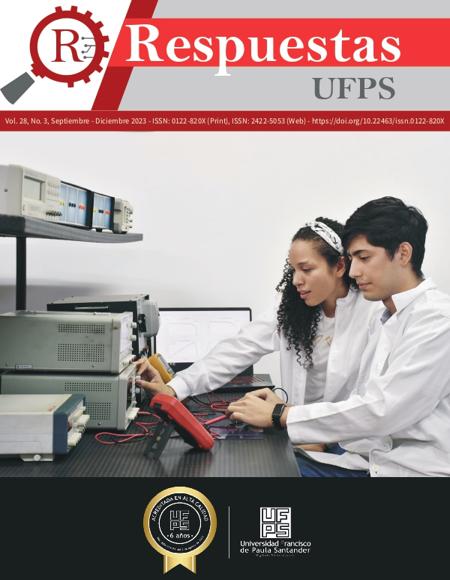Reviving Extinct Heritage through Virtual Contiguity
Revivir el patrimonio extinto a partir de la contigüidad de lo virtual
Main Article Content
This study raises questions about the notion of considering a cultural heritage asset as lost solely due to the disappearance of its material component from the sensible plane. It asserts that, through the preservation of memory fragments (information-engrams), achieving its reintegration into a digital format is possible. Consequently, the potential to immerse and extend into the natural world is contemplated. In this context, the proposal is to maintain the narrative of immovable heritage within the virtual realm as a strategy for preservation, conservation, and research, leveraging contemporary digital technologies. Following this line of thought, the study aims to observe, experiment, and analyze, in line with the Aristotelian approach, the substantial and incidental changes experienced by the essence or form of these BIC_i during the process of transferring this information from one reality to another, without losing its capacity to envelope matter with replacement potential. This capacity is grounded in the continuous existence and location of the asset. In other words, a material asset ceases to be the same when it loses its narrative continuity or becomes detached from the subject or spatial coordinates that once housed it. In summary, the possibility of reviving a vanished BIC_i through the use of memory devices and digital technologies is established. This enables memories to materialize in the real world without losing their identity, achieved through a technique of narrative relay. Thus, a lost BIC_i can be replaced or reconstructed as needed, akin to evoking a memory.
Downloads
Article Details
AMNH, «AMNH,» 5 Jun 2014. [En línea]. Available: https://www.amnh.org/explore/news-blogs/news-posts/hiroshi-sugimoto-four-decades-of-photographing-dioramas.
Aristoteles, Metafisica, Orlando,FL, Florida: kindle, 2022.
Plutarco, Vidas Paralelas, Madrid: Gredos, 2008.
T. Hoobes, Leviatán. O la materia, forma y poder de un Estado eclesiástico y civil, Madrid: Alianza, (1996) [1651].
D. Parfit , Reasons and Persons, . Oxford Oxfordshire : Clarendon Press, 1984.
UC San Diego Library’s Digital Media Lab (DML), «UC San Diego Library,» 2020. [En línea]. Available: https://library.ucsd.edu/news-events/destroyed-ancient-temple-now-open-for-virtual-exploration/.
P. Kolski, «e.euronews,» "MauAR", 2019. [En línea]. Available: https://de.euronews.com/2019/11/06/augmented-reality-app-mauar-macht-berliner-mauer-erlebbar.
N. Al-Badri y J. N. Nelles, Artists, The Other Nefertiti. [Art]. Aksioma at You Tube, 2019.
T. Demand, Artist, Starcase. [Art]. 1995.
A. Erll, Memory in Culture (Palgrave Macmillan Memory Studies), Basingstoke,Hampshire: Palgrave Macmillan, 2011.
B. Graham, «Heritage as Knowledge: Capital or Culture?,» Urban Studies, Vols. %1 de %2Volume 39,, nº 5-6, pp. 1003-1017, 2002.
D. Orderberg, Real Essentialism., New York: Routledge. Pouivet, R., 2007.
D. W. Ross, Aristóteles, Buenos Aires: Charcas, 1981.
H. Putman, «What is mathematical truth? In: Putnam, H.: Mathematics, matter and method,» Cambrige, vol. 2, 1975.
V. Vedral, Decoding Reality The Universe as quantum information, Oxford: Oxford University Press, 2010.
«definiciona,» [En línea]. Available: https://definiciona.com/informacion/ . [Último acceso: 1 Diciembre 2022].
J. M. Villa Carrero y A. Maldonado, «Informed Matter, Design and its Relationship to Force Dynamics,» de Proceedings of the 22nd Conference of the Iberoamerican Society of Digital Graphics , Sao Carlos, Brasil, 2018.
T. Davenport y L. Prusak, Working knowledge: How organizations manage what they know., Boston: Harvard Business Review Press, 1988.
W. Benjamin, El Narrador, HUEDERES, 2016.
M. Halbwachs , On Collective Memory (Heritage of Sociology Series), Chicago: University of Chicago Press, 1992.
P. Nora, Les Lieux de mémoire: La Nation, GALLIMARD, 1986.
M. Bar, « The proactive brain: using analogies and associations to generate predictions,» Trends in Cognitive Sciences , vol. 11, nº 7, pp. 280-289, 2007.
W. Wahbeh, From Spherical Photogrammetry to 3D Modeling, Advisory Board, 2016.
. D. Schmalstieg y T. Hollerer , Augmented Reality: Principles and Practice, Addison-Wesley Professional, 2016.
S. Greengard, Virtual Reality, Boston: The MIT Press, 2019.
C. Shannon y W. Weaver, The Mathematical Theory of Comunication, Chicago: The University of Illinois Press, 1964.
A. Tomasini Bassols, «Memoria y recuerdo,» Mutatis Mutandis: Revista Internacional de Filosofía, nº 4, pp. 11-26, 2015.
A. Rodriguez de las Heras, «Espacio digital, Espacio vistual,» Debats, nº 84, 2004.
M. Proust, Por el Camino de Swann: En Busca Del Tiempo Perdido, Barcelona: lumen, 2000.
J. Hawkins, Mil Cerebros, Barcelona: Tusquets, 2023.
Slater, Measuring Presence: A Response to the Witmer and Singer Presence Questionnaire, 1999.
J. Holquist, Y. Lotman y B. Johnson, « "Analysis of the Poetic Text.",» Russian Review , vol. 36, p. 240, 1977.
J. Malpas, «New Heritage: New Media and Cultural Heritage,» de New Heritage: New Media and Cultural Heritage, Abingdon, Routledge , 2008, pp. 13-26.
UNESCO, «Carta sobre la preservación del patrimonio digital,» Paris, 2003.







